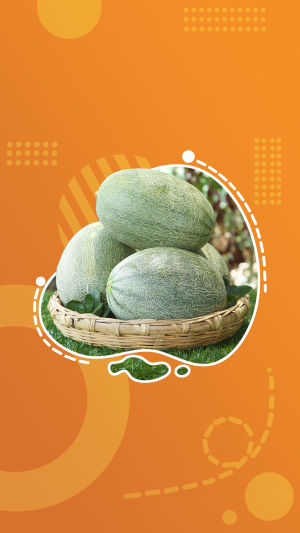The soft and juicy flesh of the cantaloupe melon is liked by many consumers.
The flesh contains 18% dry matter and 15% sugar.
There are also 0.4g of protein, 0.3g of fat, 2g of ash, 14mg of calcium, 10mg of phosphorus and 1mg of iron in every 100g of melon flesh.
The iron content is two or three times more than that of chicken and 17 times higher than that of milk.
The vitamin content of cantaloupe flesh is also no less than that of other fruits.
Cantaloupe is very low in calories, low in fat and comes with a wealth of nutrients such as vitamins and their minerals.
It meets the body's daily requirements for vitamin A and vitamin C, and provides other valuable minerals such as potassium and folic acid.
Its richness in vitamin A helps to maintain healthy skin, reduce the risk of cataracts and improve vision.
The benefits of vitamin A also include the prevention of lung cancer and oral cancer.
Cantaloupe can also be used as part of a pregnant woman's diet, as the fruit relieves water retention and helps the body to eliminate excess sodium.
Cantaloupe is rich in nutritional value and it is important to be careful when choosing what to buy.
1. Rind pattern
The skin of cantaloupe is covered in rough patterns.
You can observe the pattern of the skin of the cantaloupe, which is generally sweeter if it is intricately textured.
2. Weight
The heavier cantaloupe is likely to be unripe, while the lighter one will be sweeter.
3. The end of the vine
If the vine is still green, the melon has just been picked and is relatively fresh.
If the vine is dry and has no moisture left, it has been picked for a long time.
4. Rind colour
If the rind of the cantaloupe is golden yellow, it is ripe and sweet, while if it is greenish, it is not ripe and not sweet enough.
5. Shape
Cantaloupe melons are usually long and chubby, and the closer to round they are, the sweeter they are likely to be.
The normal ripening time for cantaloupe in the natural environment is from July to September, but with modern cultivation techniques the cantaloupe cycle can be controlled to ripen around May at the earliest and October at the latest.
The best cantaloupe is usually available from July to September and is the cheapest.





